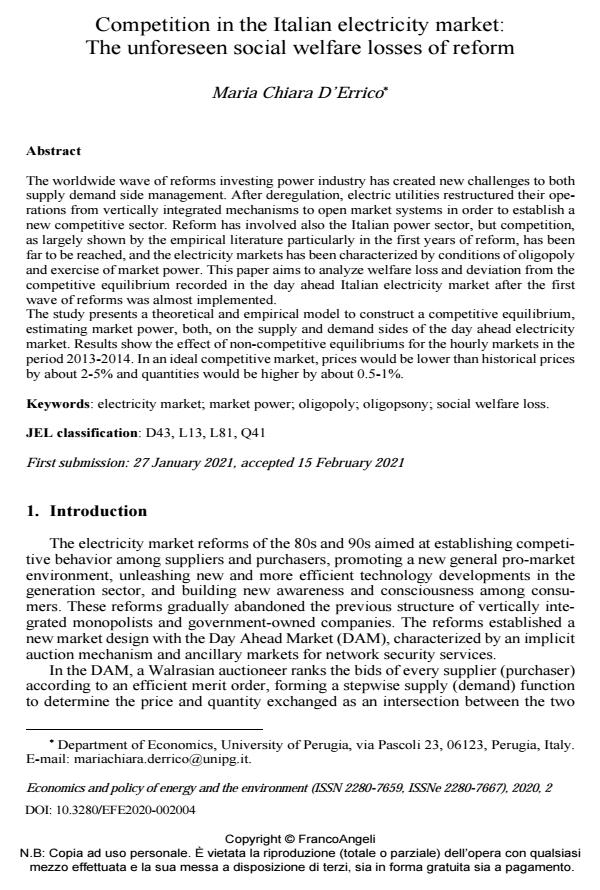Competition in the Italian electricity market: The unforeseen social welfare losses of reform
Titolo Rivista ECONOMICS AND POLICY OF ENERGY AND THE ENVIRONMENT
Autori/Curatori Maria Chiara D’Errico
Anno di pubblicazione 2021 Fascicolo 2020/2
Lingua Inglese Numero pagine 17 P. 75-91 Dimensione file 226 KB
DOI 10.3280/EFE2020-002004
Il DOI è il codice a barre della proprietà intellettuale: per saperne di più
clicca qui
Qui sotto puoi vedere in anteprima la prima pagina di questo articolo.
Se questo articolo ti interessa, lo puoi acquistare (e scaricare in formato pdf) seguendo le facili indicazioni per acquistare il download credit. Acquista Download Credits per scaricare questo Articolo in formato PDF

FrancoAngeli è membro della Publishers International Linking Association, Inc (PILA)associazione indipendente e non profit per facilitare (attraverso i servizi tecnologici implementati da CrossRef.org) l’accesso degli studiosi ai contenuti digitali nelle pubblicazioni professionali e scientifiche
The worldwide wave of reforms investing power industry has created new challenges to both supply demand side management. After deregulation, electric utilities restructured their opera-tions from vertically integrated mechanisms to open market systems in order to establish a new competitive sector. Reform has involved also the Italian power sector, but competition, as lar-gely shown by the empirical literature particularly in the first years of reform, has been far to be reached, and the electricity markets has been characterized by conditions of oligopoly and exercise of market power. This paper aims to analyze welfare loss and deviation from the competitive equilibrium recorded in the day ahead Italian electricity market after the first wave of reforms was almost implemented. The study presents a theoretical and empirical model to construct a competitive equilibrium, estimating market power, both, on the supply and demand sides of the day ahead electricity market. Results show the effect of non-competitive equilibriums for the hourly markets in the period 2013-2014. In an ideal competitive market, prices would be lower than historical prices by about 2-5% and quantities would be higher by about 0.5-1%.
Parole chiave:Electricity market; market power; oligopoly; oligopsony; social welfare loss
Jel codes:D43, L13, L81, Q41
Maria Chiara D’Errico, Competition in the Italian electricity market: The unforeseen social welfare losses of reform in "ECONOMICS AND POLICY OF ENERGY AND THE ENVIRONMENT" 2/2020, pp 75-91, DOI: 10.3280/EFE2020-002004